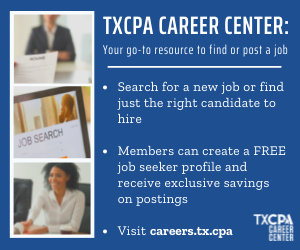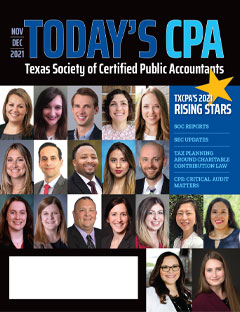How Your Organization Can Successfully Navigate 'The Great Resignation'
By Josh Jeans
Throughout the pandemic, employers have seen a sharp rise in employees leaving their positions. This event started around January 2021 across industries and is now known as “The Great Resignation,” a term coined by the associate professor of management at Texas A&M University, Anthony Klotz.
While there are no concrete reasons why people are leaving their current positions, there are many credible theories. One theory touches on the idea of people exercising more control over their employment future after having very little control over many other aspects of their life during the pandemic. Another theory points to people wanting lower-stress jobs with higher pay along with the ability to work from home.
Whatever the reasons for the mass exodus may be, the fact is that this event is still happening. In August 2021, 4.3 million Americans left their jobs. According to the Bureau of Labor Statistics, these numbers are the highest they’ve seen since 2000, when the agency began tracking data on employee turnover across industries. The figure also marked the sixth consecutive month of extremely high rates of employees quitting.
The accounting profession has certainly not been left untouched by The Great Resignation. Last year, the profession saw a higher turnover rate compared to the year before. It’s also been challenging to pinpoint exactly why people are leaving, as a variety of explanations were provided by former employees. These explanations included wanting to be home more with their children and losing interest in their work. Employees are often snatched up by larger organizations that can offer more in the way of compensation.
It’s also essential to point out that not only are employees quitting their jobs in droves, but millions of jobs remain unfilled. This past August was the third month in a row with over 10 million job vacancies in the United States, even though nearly eight million Americans were unemployed. It’s clear from these statistics that businesses are not only experiencing high turnover, but they are also most likely experiencing difficulty hiring and retaining new talent.
Therefore, it’s imperative that you, as a business leader, learn how to navigate these changes by updating your approach to hiring and retention to ensure that you attract and keep employees who will help you achieve your business goals.
Step #1: Do Your Research and Shift Your Mindset
As discussed above, there’s no clear-cut reason why people are leaving their jobs. The reasons vary from industry to industry and business to business. With that in mind, you must individualize your knowledge and understanding of your staff and determine why they want to leave before they make that final decision to move on. One trend that we can see happening across the board is that employees are not voicing their concerns to management. Instead, they’re quietly looking for other jobs when dissatisfied, then disappearing. Two ways you can help curtail this behavior are:
- Establish touchpoints. Prioritize getting to know your employees’ concerns and issues related to their job early on by ensuring there is someone on staff they feel comfortable with to address issues before they become a significant problem.
- Hire a specialist. Look to hiring a new staff member to serve as the touchpoint for staff to voice their concerns. This person ought to be one who can build trust with your staff and help point them to appropriate resources in times of need. They should also be involved with recruitment and outreach, and ensure that current and future employees have a great experience working for you.
Step #2: Revamp Your Hiring Approach and Process
People are leaving their jobs, but application submissions are down across the board. To that end, you must adjust your current hiring practices to attract talent who will stay in the positions for which you’re hiring. To accomplish this, we recommend incorporating the following actions into your approach.
Bolster Your Marketing Strategy
Since there are so many options for those looking for work, it means a number of businesses are looking for top talent alongside you. In this instance, you must market yourselves as a desirable employer by communicating this to potential recruits.
Whether it’s showcasing awards on your website that your organization has won related to being a good employer or noting your low turnover rate during interviews, make sure applicants know your organization values its employees and treats them well.
Accurately Gauge Each Applicant’s Level of Interest
People are casting a wide net during the job hunt, which means employers like yourself are receiving many applications and few candidates who are enthusiastic about working for you.
For this reason, it’s crucial that you accurately gauge each candidate’s interest in the position and your organization during the very first interview. Doing so will save you the time and headaches associated with continuing to interview and ultimately hire someone who may not accept the position or leave shortly after they’ve started.
Some tips on determining an applicant’s interest include the following:
- Listening and watching closely to see if they seem passive or relatively nonchalant about the position.
- Determining whether they know anything about your organization.
- Pushing back on some of their answers to see if they remain steadfast in their responses.
- Seeing what kind of questions they ask you (i.e., are these standard, run-of-the-mill queries or more detailed questions specific to your organization?).
- Figuring out how excited they are to do the work rather than focusing on how competent or charismatic they are.
Check Your Bias
While implicit bias is often present among employers when they’re conducting the hiring process, it can be easily exacerbated in these pandemic times, given how difficult it is to find the appropriate person for a job and have them accept and show up for the position. However, it would be best if you remain diligent in curtailing your bias while hiring by making sure that you thoroughly vet everyone and make decisions based on the information provided to you rather than snap judgments or assumptions.
Step #3: Invest in Your Current Employees
During this Great Resignation, employee retention deserves as much of your attention as hiring and recruitment efforts. In short, if you can attract talent but cannot hold onto them, you’re back to square one.
Investing in your current employees by understanding their needs and making sure those needs are met is the best way to ensure that every member of your team stays with your organization for the long haul. These investments also show that you value your team and their contributions that aid in your business’s success.
Manage Schedules Based on People’s Needs While Operating Remotely
People’s needs and schedules have changed drastically since the start of the pandemic and these things continue to fluctuate. With that in mind, it’s essential that your management team allows your staff to take charge of their schedules to ensure that they work at times that function well for them and the organization.
You can help your employees create a work schedule that works well for both them and you by doing the following:
- Refraining from micromanaging people’s hours.
- Establishing clear and reasonable expectations for when people should be online (e.g., taking into account when all-staff or client meetings occur).
- Having team members communicate when they’ll be online by creating work hours and sticking to them.
- Not scheduling last-minute meetings unless absolutely necessary.
Stick to a 40-hour Workweek to Avoid Burnout
Burnout has become even more of an issue during the pandemic, as other stressors outside of the work environment have increased significantly for most people. It’s imperative that you work with your team to combat this.
One way to go about it is to ensure your team can maintain a reasonable schedule to promote a solid work-life balance. Doing so helps team members avoid feeling burned out, which means they’re able to show up to work ready to perform at the top of their game.
Keep track of employee timesheets and question employees who are constantly exceeding the 40-hour-per-week limit. If an employee is working more than 40-hour weeks, determine why that’s the case and address it.
Refrain from jumping to conclusions and acting based on assumptions (for example, assuming the employee has too much work and handing one or more of their clients to another employee with a seemingly lighter schedule).
Acknowledge that Compensation is Critical and Provide Competitive Benefits Packages
Cultivating a healthy and positive work environment is essential if you want to keep the staff you currently have or will eventually hire, but compensation is a huge factor, as well. While business leaders often think of compensation in regard to attracting top talent, it really is both salary and the benefits provided to employees that keep them at a job.
Competitive benefits can easily be one of the top reasons your team members refrain from looking for another job. For this reason, we suggest offering great benefits that reflect your organization’s culture and show that you see your employees as people rather than a means to achieve financial or other business-related goals.
You may consider:
- Recognizing employees on special days, such as their work anniversary, by sending them personalized gifts. These gifts are used to express how much the organization values their contribution.
- Distributing education and technology stipends through PEX cards annually, so that employees can pay for work-related educational opportunities (e.g., conferences, books, etc.) and technology that helps their job performance (e.g., internet, cell phone bill, office supplies, etc.). Adding this individualized benefit communicates that you trust your team to make work-appropriate purchases at their discretion. It also allows the organization to invest in each employee’s professional development by giving them the resources to learn more about their field in a tailor-made manner for each employee.
Navigating this Environment
There are many ways to navigate The Great Resignation based on your organization’s current employment situation. In short, it comes down to two overarching steps:
- Figuring out how many of your team members are leaving and why; and
- Developing programs that can help you address why your employees are leaving and ensure that you successfully recruit and retain new talent.
Paired with the other steps outlined above, you can easily ensure your organization comes out of the pandemic fully staffed with people who are excited about the work that lies ahead. You’ve got this!
About the Author:
Josh Jeans is a People Operations Strategist at Summit CPA Group. Before joining Summit CPA, he worked in student programming and leadership development. He had a stint in a sales career and also served in a director position at a finance startup.
About Summit CPA Group:
Summit CPA Group is a fully distributed accounting firm and leading provider of virtual CFO services in North America. In addition to providing VCFO coaching, CPA firm augmentation, Summit CPA Group is building a community of CPA firm owners who want to learn how to provide or enhance their existing VCFO service offerings. The CFO Community includes: free monthly CPE webinars, a Slack network, The Virtual CFO Playbook, a course dedicated to teaching CPA firm owners how to build and scale virtual CFO services, and more.





